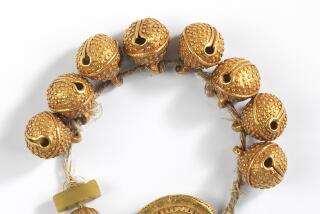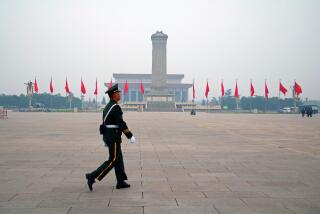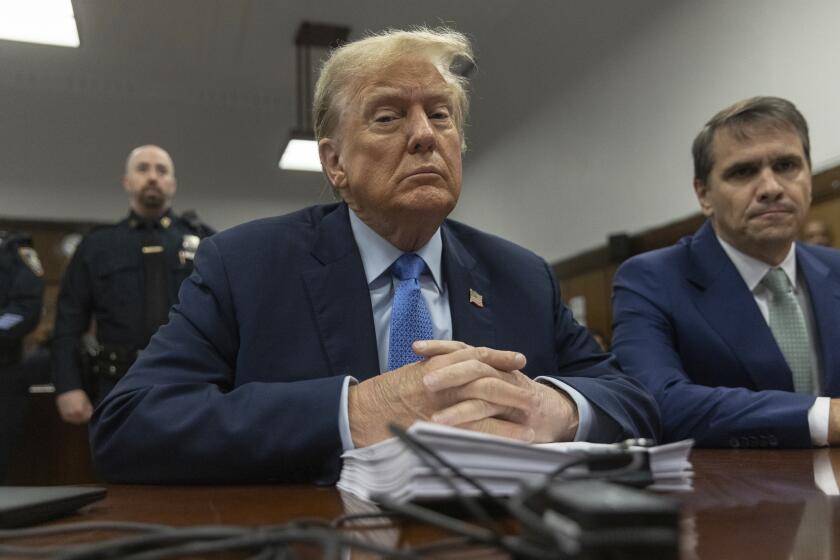China’s Forbidden City can’t keep out thieves or scandals
On the night of May 8, a pint-size thief broke into an exhibit hall in the Forbidden City and made off with $1.5 million worth of gold-and-jewel-encrusted boxes, breaching a vaunted fortress designed to protect the long-ago emperors of China from barbarian invaders.
Shi Bokui, 28, a migrant worker with a sixth-grade education was caught three days later. Not the brightest of criminals, he’d left fingerprints on a glass display case and then went to an Internet cafe nearby and registered under his own name. Most of the loot, which was on loan from a Hong Kong museum, was recovered.
Restoring the reputation of the Forbidden City, the 180-acre compound that was home to China’s emperors for 500 years, is proving more difficult.
“The Forbidden City is a symbol of China,” said Jia Yinghua, a historian who has worked in the compound staging exhibits about the imperial family. “If anybody steals from there, the foundation of the nation is shaken.”
The burglary is only the latest in a string of recent scandals that have brought ignominy to one of China’s foremost attractions. In July, one of its researchers accidentally broke a 1,000-year-old porcelain dish during a botched scientific test and others were accused of submerging a Qing dynasty wooden screen in water.
More than 100 rare books from the imperial library, many of them from the 19th century, have vanished. And corrupt employees working the admissions gates were captured on videotape pocketing the entry fees ($9 per head) from tour groups, and then got caught paying hush money to a blackmailer who threatened to blow the whistle.
Shortly after the May break-in, popular television host Rui Chenggang revealed in a blog that the Forbidden City was trying to open a private club for the super-rich with membership fees starting at $150,000. That rankled socialist sensibilities, especially given that the palace had been off-limits to the public until the abdication of the last emperor, Puyi, in 1911. The Palace Museum, as the compound is now officially called, blamed its commercial partner, Forbidden City Palace Cultural Development Co., operator of the gift shops and snack bars.
The walled city has 980 buildings in a geometric layout, many with poetic names like the Hall of Supreme Harmony and the Studio of Exhaustion from the Diligent Reign. Almost everything is painted a dusty hue of vermilion, and there is an air of faded grandeur about the place, with tall grass growing through cracks in the vast stone courtyards and yellow tile roofs.
Still, the Palace Museum is the most popular tourist attraction in China, with 8 million visitors a year, most of them Chinese. The modern capital of Beijing is laid out around its walls.
In many ways, the Forbidden City is the psychic heart of the nation; it is at the intersection of imaginary north-south and east-west axes that ancient geomancers thought marked the center of China, hence the world, with the optimal feng shui. It is no coincidence that the Communist Party chose to rule from the adjacent Zhongnanhai compound that hugs its western walls — today the true forbidden city.
Until the burglary, the Forbidden City was thought to be the best-defended place in this security-obsessed nation. The rectangular compound is protected by 1,600 burglar alarms, 3,700 smoke detectors, 400 closed-circuit cameras, 245 security guards, not to speak of its 52-foot-wide moats and 26-foot-high earthen walls.
But a citadel built to withstand battering rams and catapults is less impregnable when it comes to the onslaught of modern technology.
“All of these scandals were no doubt taking place in the past as well, but we just didn’t know about them because we didn’t have microblogs,” said Cui Jinsheng, a blogger and cultural historian, who recently revealed that suits of armor of the imperial guards were stripped of their silk and cotton in the 1970s to make quilts.
Entire blogs have started up to document the palace’s troubles. One of the more popular, Forbidden City Diary, disclosed in July that curators bought five rare Song dynasty letters at auction in 1997 for $1.5 million, which were resold in 2005 for more than three times the price, in violation of strict laws prohibiting anything in the palace collection from being sold. (Then the palace further embarrassed itself by denying ever owning the letters, despite the fact that they’d appeared in an official catalog.)
“Incompetence exhibition,” snorted the Global Times, a newspaper tied to the Communist Party, in an editorial last month.
The Forbidden City has been operated as a national museum since 1925 and the treasures are supposed to belong to the Chinese people as part of their national heritage.
Offense comes easily. In 2007, a letter-writing campaign forced Starbucks to close a small cafe operated for seven years in a traditional courtyard next to the gift shops.
Public sensitivity is heightened by the long, tragic history of depredations at the palace. The imperial treasures were looted many times, including during the Opium Wars of the mid-19th century and the invasion of the eight-power allied force after the Boxer Rebellion in 1900.
As the Qing dynasty was collapsing early in the 20th century, palace eunuchs absconded with so many relics that they were able to open their own antique shops outside the palace walls. Former emperor Puyi, who was allowed to remain for 13 years after his abdication, also pilfered from the collection, sending some of the best pieces for safekeeping in the nearby city of Tianjin, in hope that he would live well in exile.
“The problems of Forbidden City today are connected with the whole societal background of corruption. What happened during the Qing dynasty is still going on today,” said antiquities expert and blogger Pei Guanghui.
Much of the criticism focuses on the Forbidden City’s current director, Zheng Xinmiao, a former deputy provincial governor, long on Communist Party connections, short on experience with antiquities. The place is run like a fiefdom, critics say, with employees passing their jobs on to their children.
“It’s just like in the time of the emperors. You inherit your job from your parents,” said Jia, the historian. “The Forbidden City needs a modern management, an outside board of directors. It needs transparency.”
Zheng acknowledged “loopholes in management” in an interview last month with the official New China News Agency. This month, the Ministry of Public Security and the State Administration of Cultural Heritage ordered national museums to improve their security or face possible closure.
More embarrassing revelations about the Forbidden City are emerging in the case against the thief, Shi Bokui. Much has been made of his childlike build (5 feet 2, 90 pounds) and apparent ignorance of art. The items he took, nine small Art Deco cases and powder compacts, contained gold and jewels, but were not as valuable as relics that belonged to the emperors: stone drums, calligraphy, jade carvings, porcelain, paintings and scrolls.
“The thief was interested in bling-bling. He wasn’t educated about Chinese antiquities, so he stole gold,” said Han Yi, a tour guide at the Forbidden City. “Nobody thinks he really did it alone. He is a skinny little kid. “
In pretrial proceedings this month, state media reported that Shi confessed that he had hidden in the palace after closing hours, cut off the electricity in the exhibit hall to disable the alarms and punched a hole through a temporary exhibit space. He reportedly escaped by scaling one of the 26-foot walls, a detail that has inspired public incredulity.
When he was arrested, Shi had six of the pieces in his possession. The other three, he said, were lost during his escape, another tidbit that has raised suspicion.
Probably the most embarrassing aspect of the episode came later: The Forbidden City’s management presented a banner to the police to express thanks for “defending the motherland.” But they wrote the wrong character for “defend,” one that sounded the same but altered the meaning of the banner to “Shaking the motherland.”
How uncannily accurate it was, except that it is the Forbidden City’s keepers who have discomfited the nation.
More to Read
Start your day right
Sign up for Essential California for news, features and recommendations from the L.A. Times and beyond in your inbox six days a week.
You may occasionally receive promotional content from the Los Angeles Times.





